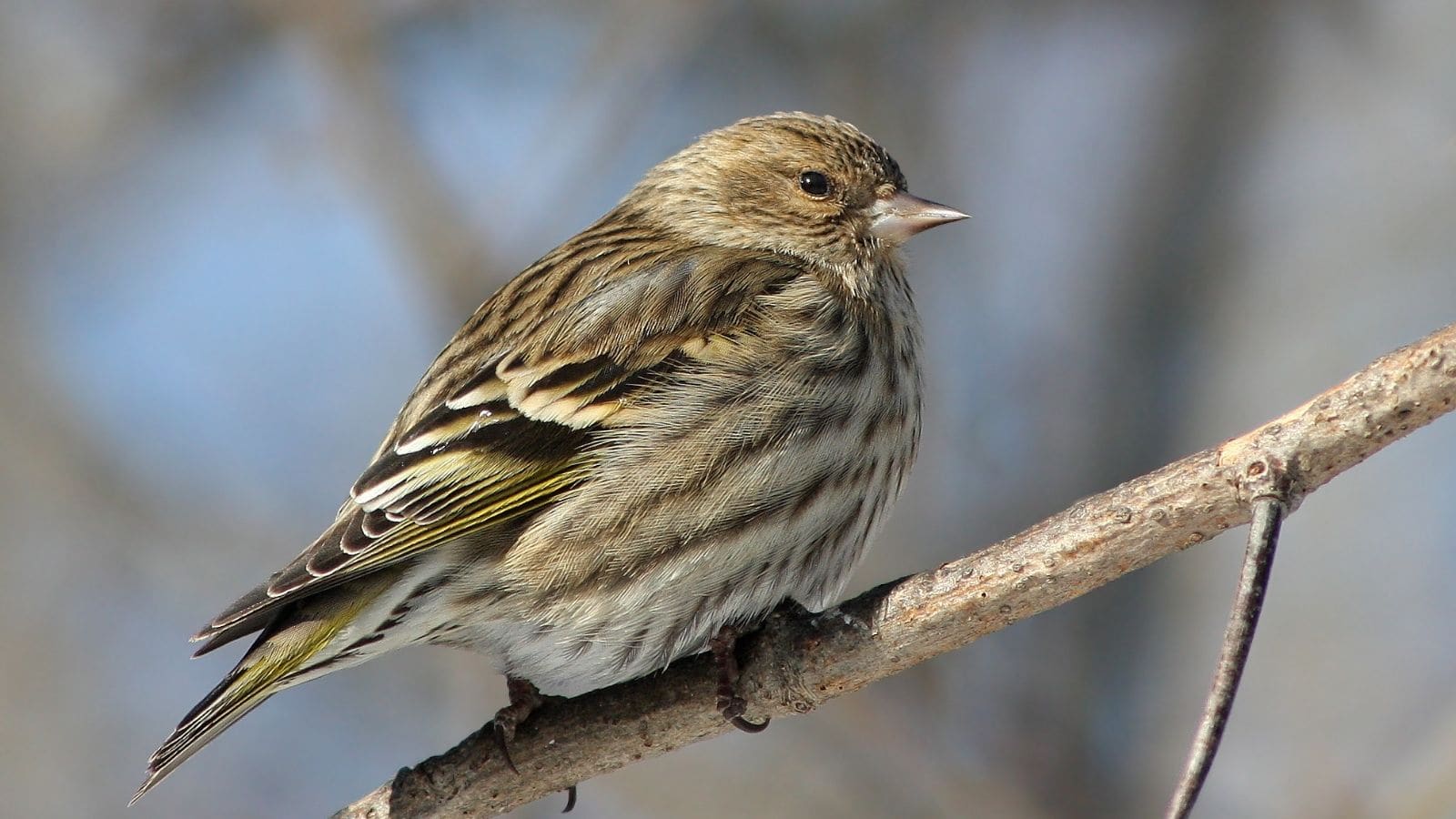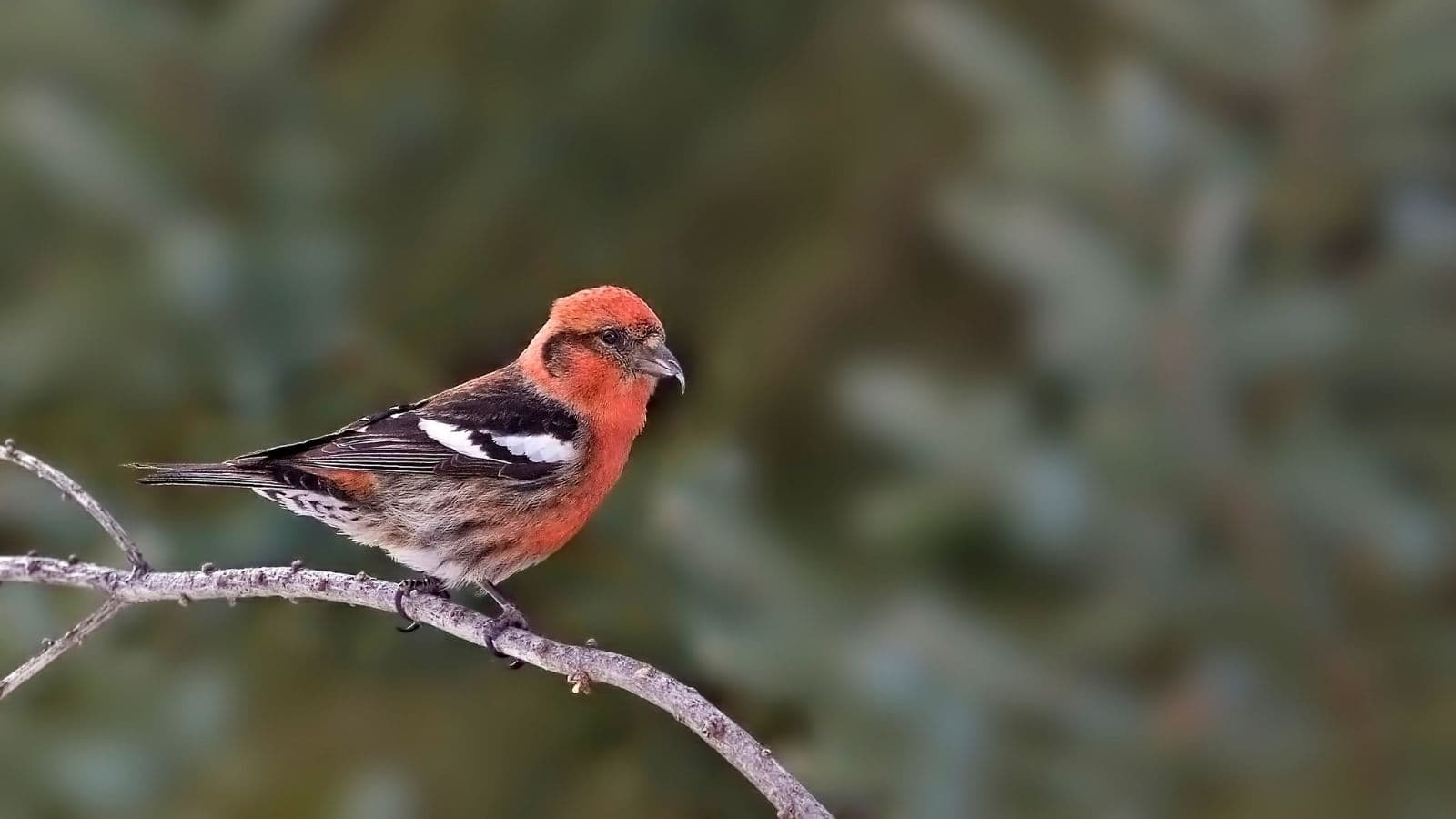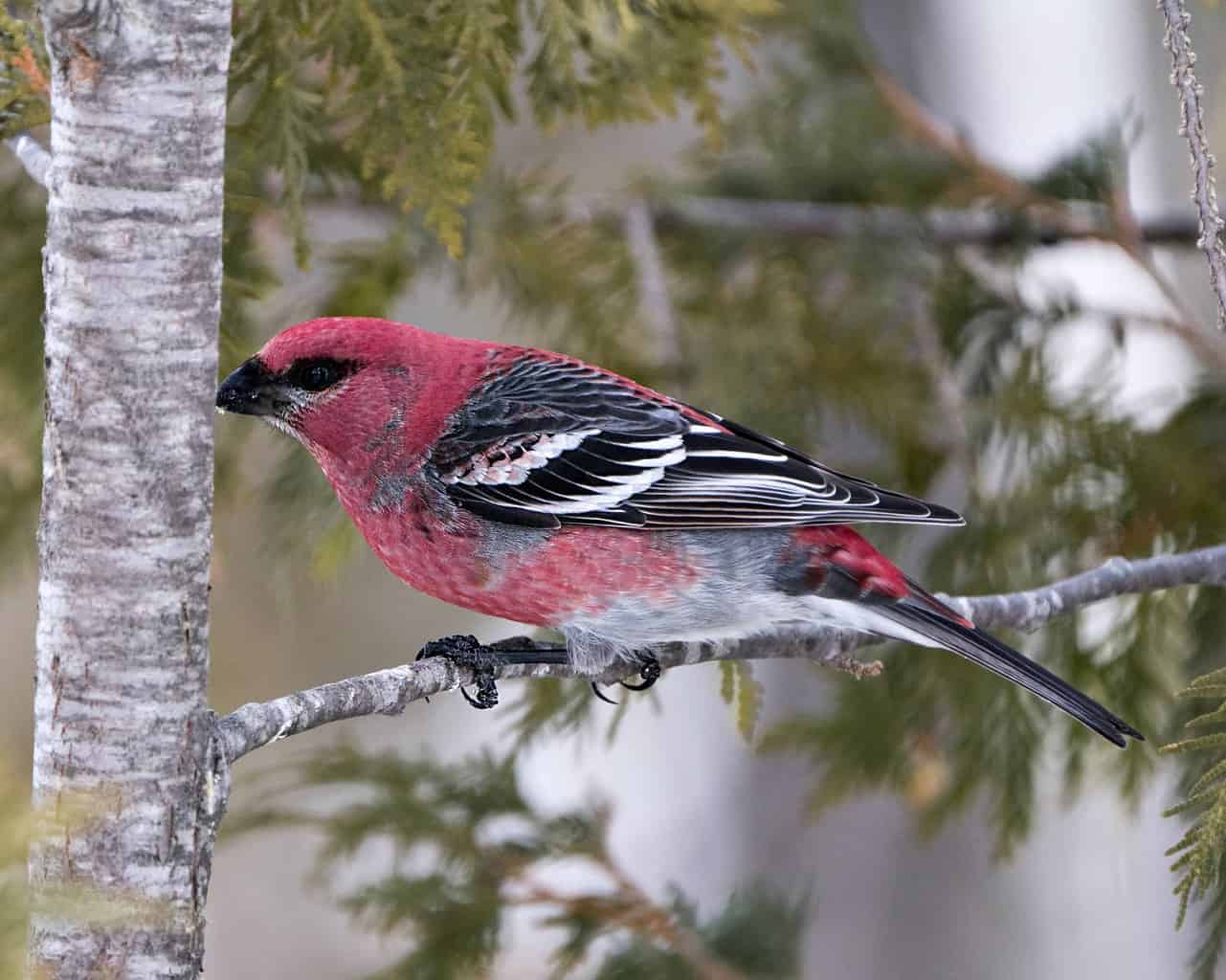Although Marland is the eighth smallest state by land area, its remarkably diverse landscapes have earned it the nickname ‘America in miniature’. Within her borders, Maryland offers sand dunes, marshes, oak-cloaked hills, suburban parks, and gardens, as well as the pine-forested Maryland mountains in the west.
These diverse landscapes offer endless habitat niches for all kinds of birds to enjoy. There’s been a whopping 455 bird species recorded in Maryland, and a handful of them are finches.
While finches may not immediately appear to be the most exotic family, closer inspection reveals that they’re some of the most fascinating of feathered friends in North America. Surviving arctic conditions and traveling between continents, here we’ll reveal the secret lives of these miraculous little birds.
A great way to get a closer look at finches is to offer them backyard bird feeders during the winter. Even the rarer, nomadic species will occasionally show up in a suburban garden to fuel up on sunflower seeds or nyjer seeds, so it’s well worth putting some food out regularly!
Exactly which finches can be seen in Maryland? We’ve listed 9 species. Why not see how many you can guess before scrolling down?
Finches in Maryland, Starting With the Most Common
American Goldfinch

- Scientific Name: Spinus tristis
- Length: 4.3-5.1 in (11-13 cm)
- Weight: 0.4-0.7 oz (11-20 g)
- Wingspan: 7.5-8.7 in (19-22 cm)
The most common finch in Maryland and the entire USA is, you guessed it, the American goldfinch. Named after the male’s bright gold coloration in the breeding season, both sexes are actually more grayish in color between October and March when they don their winter plumage.
It’s during the summer that American goldfinches are most frequently seen in Maryland, though. Appearing on more than 40% of birdwatchers reports, Maryland residents have plenty of chances to enjoy goldfinches at their brilliant best.
American Goldfinches are among the most common birds at platform feeders and tube feeders and they’re particularly fond of sunflower seeds and thistle seeds. Interestingly, these birds are entirely vegetarian and appear to completely ignore the insects and worms that many other finches eat.
A bit of local trivia: The oldest ever American goldfinch was recorded in Maryland. It was almost 11 years old when it was captured for the second time in a banding operation here.
House Finch

- Scientific Name: Haemorhous mexicanus
- Length: 5.1-5.5 in (13-14 cm)
- Weight: 0.6-0.9 oz (16-27 g)
- Wingspan: 7.9-9.8 in (20-25 cm)
If you live anywhere in the contingent states, you’re bound to be familiar with the house finch. Spending much of their time around residential areas, house finches seem to have profited immensely from human development.
Not all ornithologists are fond of house finches because they’re an introduced species in the east, and have displaced some of the region’s native species. On the plus side, they’re handsome, tame birds that can add cheer to residential neighborhoods.
Male house finches have attractive rosy heads and chests, while females are brown and lightly streaked. Although they appear rather like purple finches, males are less colorful, and females are paler than that species.
As well as being some of the most common visitors to backyard feeders, house finches seem to have a great affinity for bird baths. It can be great fun watching small flocks land around the water before splashing about and preening together.
Purple Finch

- Scientific Name: Haemorhous purpureus
- Length: 4.7-6.3 in (12-16 cm)
- Weight: 0.6-1.1 oz (18-32 g)
- Wingspan: 8.7-10.2 in (22-26 cm)
Purple finches may look very similar to house finches, but these birds are sadly not so well-adapted to living alongside humans and have declined considerably since records began.
Boisterous house sparrows and house finches often outcompete these birds for resources, and climate change may also be impacting their declining populations. They’re now only seen by around 2% of birdwatchers in winter, and considerably less than that in summer.
Purple finches are frequent backyard feeder visitors and are particularly fond of thistle seeds, so a thistle seed feeder is a great way to draw them in!
As a colorful native bird with a gorgeously sweet song, there’s little not to like about the purple finch. Modern research has even discovered that they do more good than harm in gardens as they do a superb job of eating up insect and weed pests.
Pine Siskin

- Scientific Name: Spinus Pinus
- Length: 4.3-5.5 in (11-14 cm)
- Weight: 0.4-0.6 oz (12-18 g)
- Wingspan: 7.1-8.7 in (18-22 cm)
The most widespread finch in the United States is the pine siskin. Although they’re not especially common in any one region, they can be found everywhere on the mainland, including Alaska.
As a nomadic species, pine siskins simply travel around anywhere they find plentiful food. Some of their favorite items are seeds of pines, hemlocks, alders, and birches, but they’ll also eat weed seeds of thistles, dandelions, and milkweeds.
Often flying in large flocks with goldfinches high in the canopy, it can be hard to observe pine siskins in the wild without a good pair of binoculars. Offering them sunflower seeds from a platform feeder is another great way to observe them.
Pine siskins can be told apart from their cousins in the goldfinch family by their slender bill and strongly notched tail. They appear in around 2% of winter checklists but are hardly seen in Maryland during the summer.
Evening Grosbeak

- Scientific Name: Hesperiphona vespertina
- Length: 6.3 to 8.7 in (16 to 22 cm)
- Weight: 1.37 to 3.04 oz (38.7 to 86.1 g)
- Wingspan: 12 to 14 in (30 to 36 cm)
Now we’re done with the more common finches in Maryland, let’s take a look at the rarer species. Evening grosbeaks are only reported in around 1 in 500 checklists during the winter months and are almost entirely absent during summer.
The slim chances of seeing an evening grosbeak, however, only make an encounter all the more exciting. These huge, impressive finches have a bright golden ring around their crown and a massive bill that they use to crack open seeds that other finches leave behind.
If you do manage to spot an evening grosbeak, it’ll probably be in a coniferous forest. Moving around together in tight, single-species flocks, they usually only travel this far south when food supplies are scarce further north.
White-Winged Crossbill

- Scientific Name: Loxia leucoptera
- Length: 5.9-6.7 in (15-17 cm)
- Weight: 0.8-0.9 oz (24-26 g)
- Wingspan: 10.2-11.0 in (26-28 cm)
Another bird of the north, white-winged crossbills are rarely seen as far south as Maryland and are only reported by around one in a thousand bird watchers during the winter.
Crossbills are among the most interesting and spectacular finches in North America. Often thought of as the parrots of the north, crossbills are both brightly colored and playful as they wander through coniferous forests in search of tree seeds.
White-winged crossbills are similar in most ways to red crossbills, except they’re a slightly lighter build, and have white wing patches that are lacking in their relatives.
These opportunistic birds of the boreal forests can also be found in much of Russia and Scandinavia, as well as the northern contingent USA, Alaska, and Canada.
Red Crossbill

- Scientific Name: Loxia curvirostra
- Length: 5.5-6.5 in (14-17 cm)
- Weight: 1.4 oz (40 g)
- Wingspan: 10-10.75 in (25-27 cm)
A very close relative of the white-winged crossbill, the red crossbill (or ‘common crossbill’) is just as attractive and entertaining as its cousin, and perhaps even more so. Whereas only male white-winged crossbills have much color, red crossbill females are a beautiful shade of green.
Using the specially adapted twisted bills to extract conifer seeds, red crossbills scour forests from Alaska to Central America and beyond in search of the tree species that provide the bulk of their food.
Both crossbill species exhibit the extremely unusual behavior of breeding any time there’s an abundant source of food.
Whether it’s at the height of summer or the depths of winter, crossbills build their nests in coniferous trees and raise their young on..guess what? That’s right, conifer seeds.
Common Redpoll

- Scientific Name: Acanthis flammea
- Length: 4.7-5.5 in (12-14 cm)
- Weight: 0.4-0.7 oz (11-20 g)
- Wingspan: 7.5-8.7 in (19-22 cm)
Common redpolls are certainly not all that common in Maryland. Since the state lies at the southerly end of their winter range, they’re seldom seen here during the winter, and never in the breeding season.
Amazingly, for such a small bird, redpolls prefer to either remain in the Northern boreal forests year-round or move further north into the arctic tundra to breed during the summer. In winter they’ve even been known to dig themselves into snow tunnels to sit out the coldest weather!
If you do see redpolls in Maryland, it will likely either be in a flock feeding noisily on tree or weed seeds, or at a backyard feeder. Learning how to recognize their noisy chatter is a great way to locate and identify them.
Both sexes have a distinctive red cap, and males also don a deep pink chest. The rest of their bodies are light gray with dark streaks.
Pine Grosbeak

- Scientific Name: Pinicola enucleator
- Length: 7.9-9.8 in (20-25 cm)
- Weight: 2.01 oz (57 g)
- Wingspan: 13.0 in (33 cm)
Pine grosbeaks only show up in Maryland every few years, but when they do, they’re all over the local bird-watching headlines!
As the largest finch in the world, the elusive pine grosbeak has an impressive presence that commands reverence and wonder. Males are a striking red color, whereas females are a dull orange or slightly green in color.
Watching these birds feeding can be a real hoot. Like crossbills, pine grosbeaks are agile, acrobatic birds that can sometimes hang upside down on branches as they greedily gobble down their favorite fruits such as crab apples, Sorbus berries, and Aronia.
If you do spot a flock of pine grosbeaks in Maryland, be sure to alert a local birdwatching authority such as the Maryland Ornithological Society.
One That Got Away
Remember how common redpolls are rarely seen in Maryland? Well, their cousin, the hoary redpoll, or ‘Arctic redpoll’ is even more scarce here.
These northerly extremists almost never venture this far south and may go several years without showing up in Maryland.
When they do, they’re usually mixed up in flocks with common redpolls. The two species are very hard to tell apart, even for veteran birdwatchers!
Conclusion
Maryland presents plentiful opportunities to encounter finches for residents and visitors alike.
Whether you’re enjoying watching house finches taking a bird bath in your garden or tracking a flock of siskins through pine woods, these energetic, acrobatic birds have a special way of lifting our spirits.
One of the main predators of finches in Maryland is the hawk family. Amazingly, there are just as many hawk species as finches in Maryland, and we’ve made a comprehensive list of them here.

